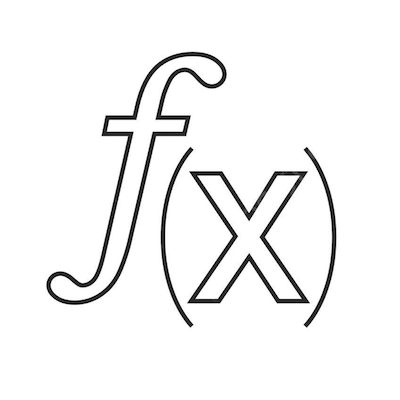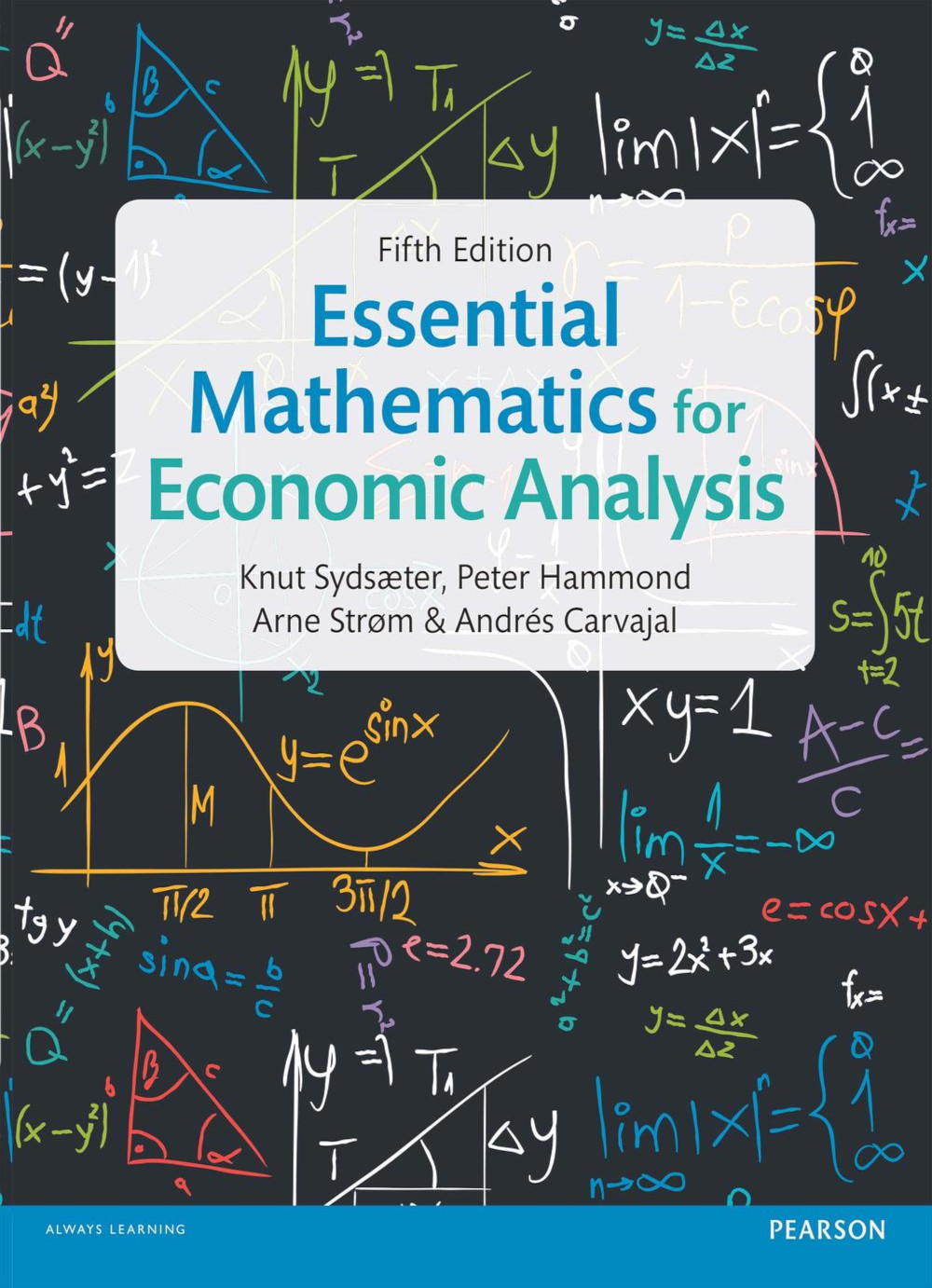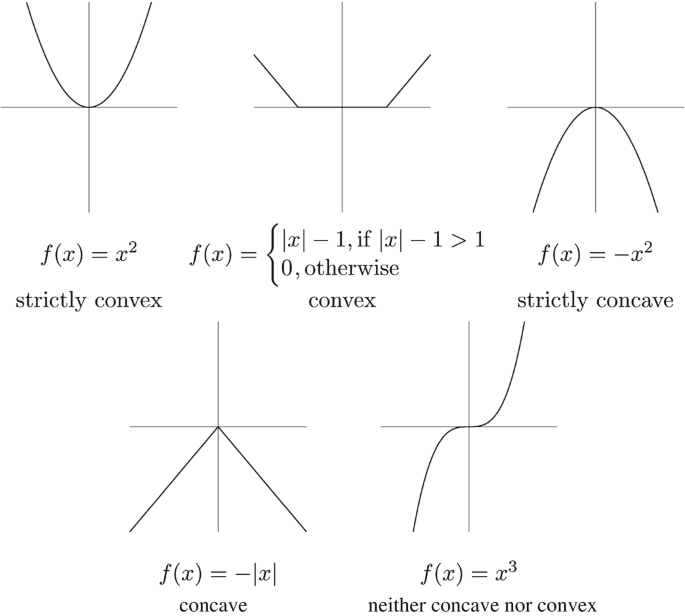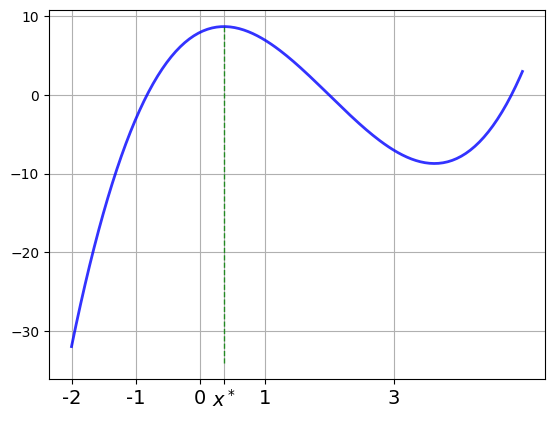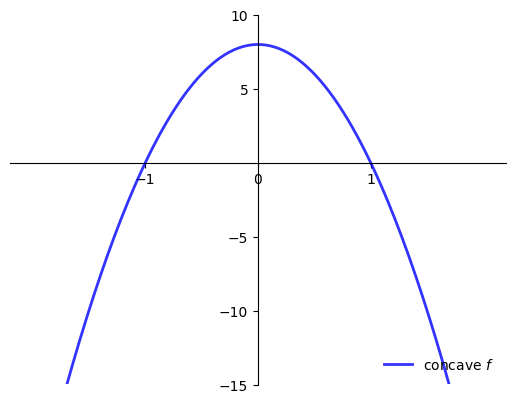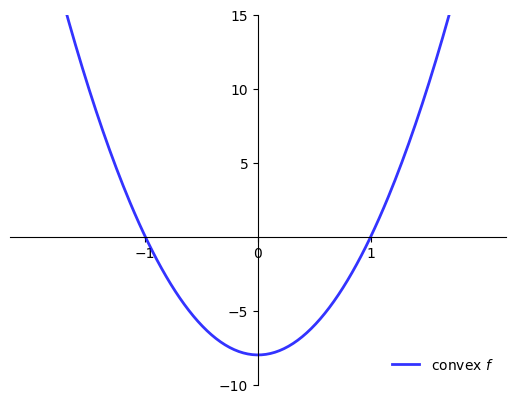Announcements & Reminders
Next two weeks are teaching break 🎉
March 31 to April 13
No teaching
No tutorials
Good time to go over the material you struggle with, read the textbook and look through the extra material
Online test 2 next week on Thursday, April 3 😬
covers material from the last three weeks
Sequences and convergence
Series
Limit of a function
Univariate differentiation
Applications of derivatives
DO NOT FORGET
postponed tests only when validated by ANU’s procedure
On short answer question write exactly what is asked
Single word is one and only on word!
Check your spelling
Two Fridays after the break are public holidays 🎊
Lectures are recorded (see links in these notes)
Tutorials proceed as usual, exercises for recorded lectures
Next in-pension lecture is on May 2nd
Online test 3 after two weeks of recorded lectures on Thursday, May 1 😬
covers material from the previous two weeks
Vector and matrix arithmetics
Linear systems of equations
DO NOT FORGET
On short answer question write exactly what is asked
Have a good break!
📖 Applications of derivatives#
⏱ | words
References and additional materials
L’Hôpital’s rule for indeterminate limits#
Consider the function \(f(x)=\frac{g(x)}{h(x)}\).
Definition
If \(\lim _{x \rightarrow x_{0}} g(x)=\lim _{x \rightarrow x_{0}} h(x)=0\), we call this situation an “\(\frac{0}{0}\)” indeterminate form
If \(\lim _{x \rightarrow x_{0}} g(x)= \pm \infty\), \(\lim _{x \rightarrow x_{0}} h(x)= \pm \infty\), we call this situation an “\(\frac{ \pm \infty}{ \pm \infty}\)” indeterminate form
Fact: L’Hôpital’s rule for limits of indeterminate form
Suppose that \(g(x)\) and \(h(x)\) are both differentiable at all points on a non-empty interval \((a, b)\) that contains the point \(x=x_{0}\) (with the exception that they might not be differentiable at the point \(x_{0}\)).
Suppose also that \(h^{\prime}(x) \neq 0\) for all \(x \in(a, b)\).
Further, assume that for \(f(x)=\frac{g(x)}{h(x)}\) we have either “\(\frac{0}{0}\)” or “\(\frac{ \pm \infty}{ \pm \infty}\)” indeterminate form.
Then if \(\lim _{x \rightarrow x_{0}}\frac{g^{\prime}(x)}{h^{\prime}(x)}\) exists, then
all four conditions have to hold for the L’Hôpital’s rule to hold!
Example
Note that in the examples below we have “\(\frac{0}{0}\)” indeterminacy, and both enumerator and denominator functions are differentiable around \(x=0\)
Example
L’Hôpital’s rule is not applicable for \(\lim_{x \to 0} \frac{x}{\ln(x)}\) because neither “\(\frac{0}{0}\)” nor “\(\frac{ \pm \infty}{ \pm \infty}\)” indeterminacy form applies.
Example
For any \(p>0\) and \(a>1\) we have
In other words any exponential function eventually grows faster than any power function!
Proof:
Consider logarithm of the ratio of the functions
Clearly, \(\lim_{x \to \infty} x = \infty\).
With \(\lim_{x \to \infty} \frac{\ln(x)}{x}\) we have indeterminacy of the form \(\frac{\infty}{\infty}\), so by L’Hôpital’s rule
Coming back to the original limit, because \(\ln a>0\), we conclude that
and therefore since \(\exp(y) \to 0\) as \(y \to -\infty\), \(\lim_{x \to \infty} \frac{x^p}{a^x} = 0\). \(\blacksquare\)
Investigating the shape of functions#
First and second order derivatives are very useful for investigation the shape of functions.
Everywhere in this section we assume that \(A \subset \mathbb{R}\) is an open/semi-open/closed interval.
Increasing and decreasing functions#
Definition
A function \(f : X \rightarrow \mathbb{R}\), where \(X \subseteq \mathbb{R}\), is said to be a non-decreasing (weakly increasing) function if
Definition
A function \(f : X \rightarrow \mathbb{R}\), where \(X \subseteq \mathbb{R}\), is said to be a strictly increasing function if (a) \(x < y \iff f(x) < f(y)\).
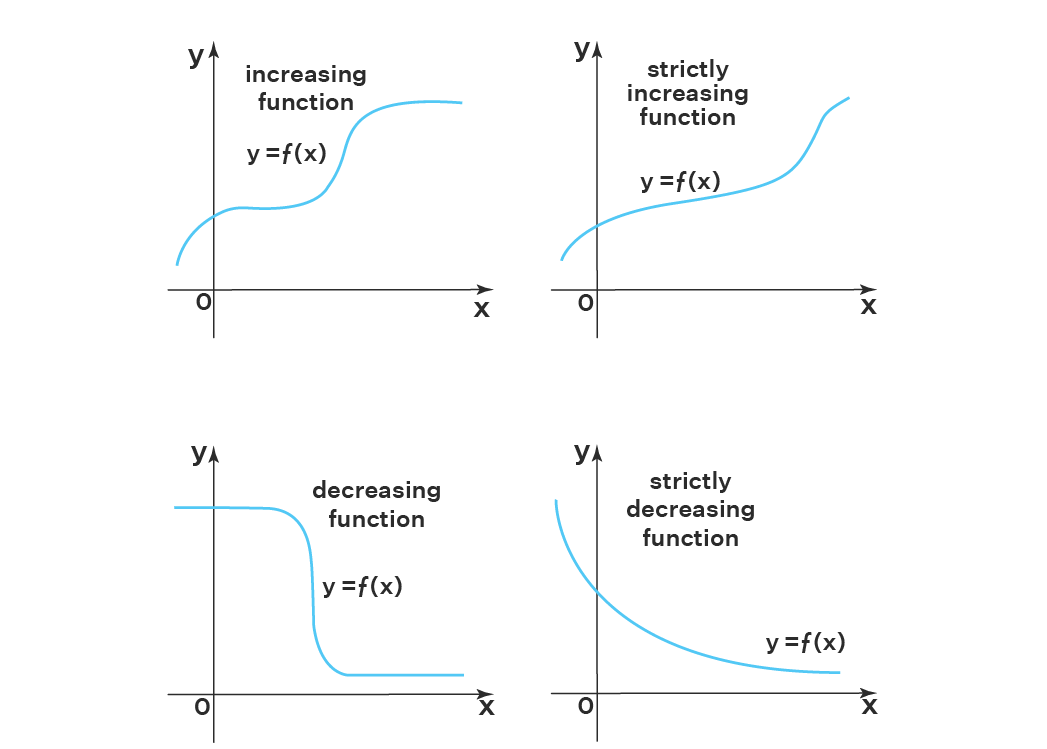
Note the following:
A strictly increasing function is also a one-to-one function.
There are some one-to-one functions that are not strictly increasing.
A strictly increasing function is also a non-decreasing function.
There are some non-decreasing functions that are not strictly increasing.
Definition
Non-increasing and strictly decreasing functions are defined in a similar manner, with the inequality signs flipped.
Example
Fact
For a differentiable function \(f: A\subset\mathbb{R} \to \mathbb{R}\), the following holds:
\(f\) is non-decreasing \(\iff\) \(f'(x) \geqslant 0\) for all \(x \in A\)
\(f\) is non-increasing \(\iff\) \(f'(x) \leqslant 0\) for all \(x \in A\)
\(f\) is constant \(\iff\) \(f'(x) = 0\) for all \(x \in A\)
Example
Therefore \(f\) is non-decreasing: adding \(g(x)=x\) to \(f(x)=\sin(x)\) is all it takes to stop the wiggling and make the function strictly increasing.
Fact
For a differentiable function \(f: A\subset\mathbb{R} \to \mathbb{R}\), the following holds:
\(f\) is strictly increasing \(\impliedby\) \(f'(x) > 0\) for all \(x \in A\)
\(f\) is strickly decreasing \(\impliedby\) \(f'(x) < 0\) for all \(x \in A\)
Note the equivalence (\(\iff\)) in the first fact and the implication (\(\impliedby\)) in the second fact
Unfortunately, there are examples when \(f'(x)=0\) and the function is still strictly decreasing or increasing
Example
However, because the derivative comes on zero only ``momentarily’’, so even a smallest deviation from zero changes the function value in the right direction, \(f\) is strictly increasing around \(x=0\).
Concavity and convexity#
Definition
Function \(f: A \subset \mathbb{R} \to \mathbb{R}\) is called convex if
for all \(x, y \in A\) and all \(\lambda \in [0, 1]\)
\(f\) is called strictly convex if
for all \(x, y \in A\) with \(x \ne y\) and all \(\lambda \in (0, 1)\)
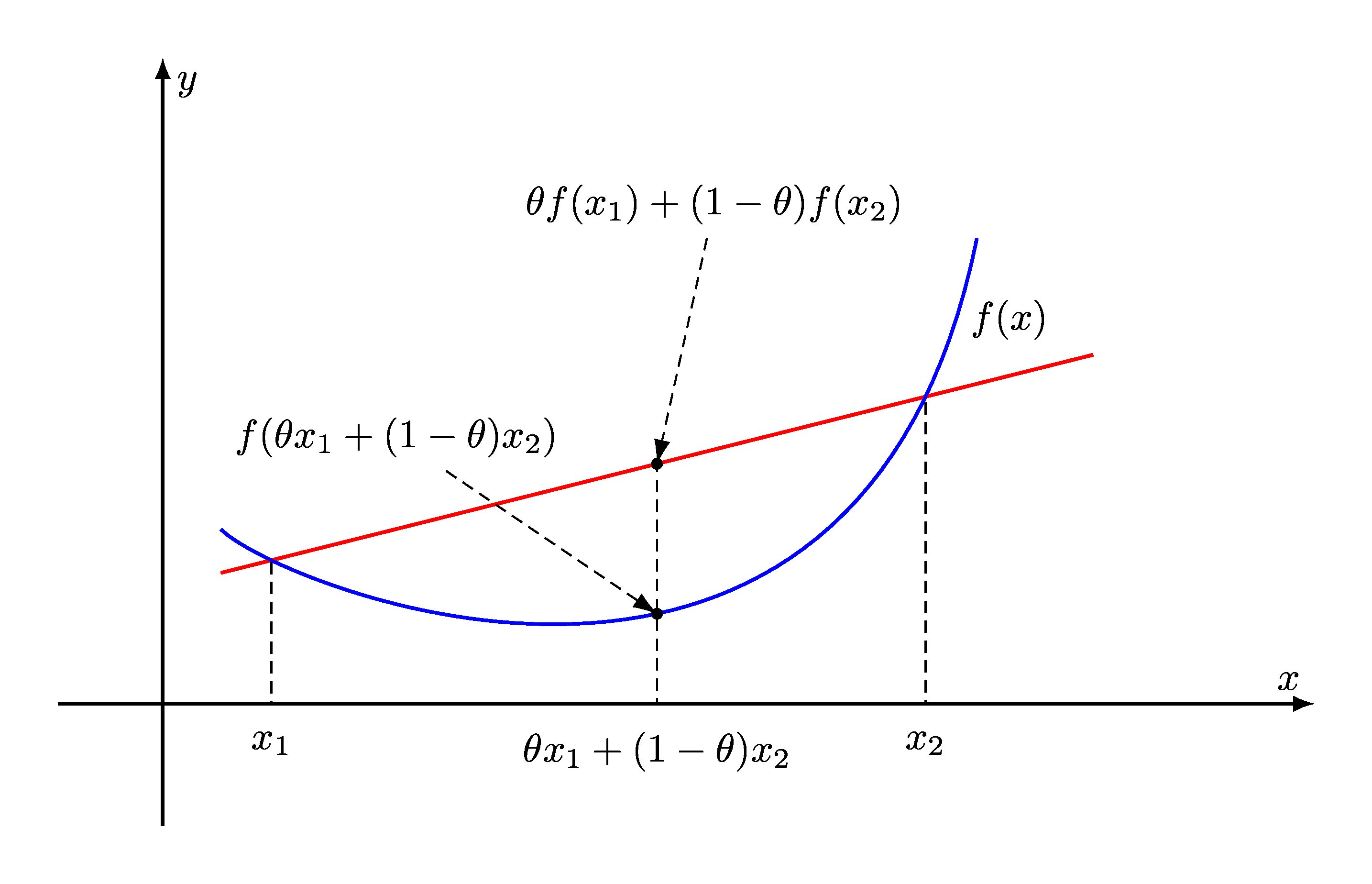
Definition
Function \(f: A \subset \mathbb{R} \to \mathbb{R}\) is called concave if
for all \(x, y \in A\) and all \(\lambda \in [0, 1]\)
\(f\) is called strictly concave if
for all \(x, y \in A\) with \(x \ne y\) and all \(\lambda \in (0, 1)\)
Fact
\(f\) is concave if and only if \(-f\) is convex.
\(f\) is strictly concave if and only if \(-f\) is strictly convex
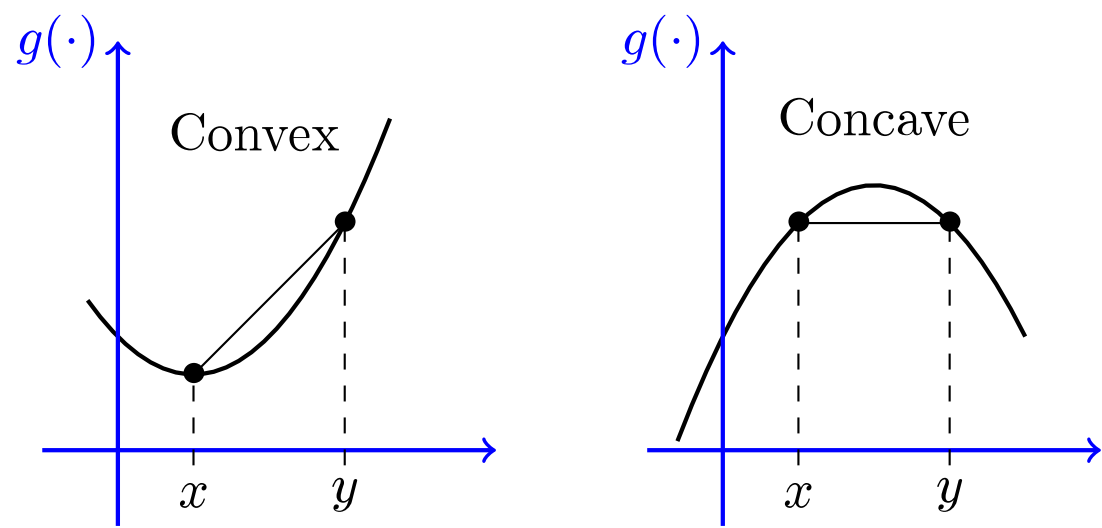
Proof
The inequality in the definitions flip with the sign change, so the result follows.
\(\blacksquare\)
Let \(f\) and \(g\) be functions from \(A \subset \mathbb{R}\) to \(\mathbb{R}\)
Fact
If \(f\) and \(g\) are convex (concave) and \(\alpha \geq 0\), then
\(\alpha f\) is convex (concave)
\(f + g\) is convex (concave)
If \(f\) and \(g\) are strictly convex (strictly concave) and \(\alpha > 0\), then
\(\alpha f\) is strictly convex (strictly concave)
\(f + g\) is strictly convex (strictly concave)
Proof
Let’s prove that \(f\) and \(g\) convex \(\implies h := f + g\) convex
Pick any \(x, y \in A\) and \(\lambda \in [0, 1]\)
We have
Hence \(h\) is convex \(\blacksquare\)
Derivatives (second derivative to be exact) help us to determine whether a function is convex or concave!
Fact
For a differentiable function \(f: A\subset\mathbb{R} \to \mathbb{R}\), the following holds:
\(f\) is convex \(\iff\) \(f''(x) \geqslant 0\) for all \(x \in A\)
\(f\) is concave \(\iff\) \(f''(x) \leqslant 0\) for all \(x \in A\)
Fact
For a differentiable function \(f: A\subset\mathbb{R} \to \mathbb{R}\), the following holds:
\(f\) is strictly convex \(\impliedby\) \(f''(x) > 0\) for all \(x \in A\)
\(f\) is strickly concave \(\impliedby\) \(f''(x) < 0\) for all \(x \in A\)
Again, note the equivalence (\(\iff\)) in the first fact and the implication (\(\impliedby\)) in the second fact
Unfortunately, there are examples when \(f''(x)=0\) and the function is still strictly concave or convex
Example
However, because the second derivative comes on zero only ``momentarily’’, \(f\) is strictly convex around \(x=0\).
Example
\(f(x) = a x + b\) is concave on \(\mathbb{R}\) but not strictly
\(f(x) = \log(x)\) is strictly concave on \((0, \infty)\)
Example
\(f(x) = a x + b\) is convex on \(\mathbb{R}\) but not strictly
\(f(x) = x^2\) is strictly convex on \(\mathbb{R}\)
Show code cell content
from myst_nb import glue
import matplotlib.pyplot as plt
import numpy as np
def subplots():
"Custom subplots with axes through the origin"
fig, ax = plt.subplots()
# Set the axes through the origin
for spine in ['left', 'bottom']:
ax.spines[spine].set_position('zero')
for spine in ['right', 'top']:
ax.spines[spine].set_color('none')
return fig, ax
xgrid = np.linspace(-2, 2, 200)
f = lambda x: (x**2-1)**2
fig, ax = subplots()
ax.set_ylim(-1, 2)
ax.set_yticks([-1, 1, 2])
ax.set_xticks([-1, 1])
ax.plot(xgrid, f(xgrid), 'k-', lw=2, alpha=0.8, label='$f=(x^2-1)^2$')
ax.plot([-1,-1], [-0.5,2], 'r:')
ax.plot([0,0], [-0.5,2], 'r:')
ax.plot([1,1], [-0.5,2], 'r:')
ax.plot([-1/np.sqrt(3),-1/np.sqrt(3)], [-0.5,2], 'b:')
ax.plot([1/np.sqrt(3),1/np.sqrt(3)], [-0.5,2], 'b:')
ax.legend(frameon=False, loc='lower right')
plt.show()
glue("square-square-example", fig, display=False)
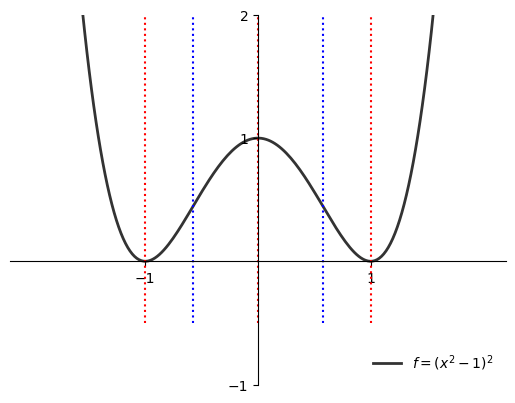
Example
Let’s investigate a shape of function \(f(x) = (x^2-1)^2\) on \(\mathbb{R}\).
The first and second derivatives are
Solving inequality \(f'(x) \geqslant 0\) gives
when \(x \in (-\infty, -1] \cup [0, 1]\) \(f'(x) \leqslant 0\), thus the function is non-increasing on this set
when \(x \in [-1,0] \cup [1,\infty)\) \(f'(x) \geqslant 0\), thus the function is non-decreasing on this set
Solving inequality \(f''(x) \geqslant 0\) gives
when \(x \in (-\infty, -1/\sqrt{3}] \cup [1/\sqrt{3},\infty)\) \(f''(x) \geqslant 0\), thus the function is convex on this set
when \(x \in [-1/\sqrt{3},1/\sqrt{3}]\) \(f''(x) \leqslant 0\), thus the function is concave on this set

Univariate optimization#
Let \(f \colon [a, b] \to \mathbb{R}\) be a differentiable (smooth) function
\([a, b]\) is all \(x\) with \(a \leqslant x \leqslant b\)
\(\mathbb{R}\) is “all numbers”
\(f\) takes \(x \in [a, b]\) and returns number \(f(x)\)
derivative \(f'(x)\) exists for all \(x\) with \(a < x < b\)
Definition
A point \(x^* \in [a, b]\) is called a
maximizer of \(f\) on \([a, b]\) if \(f(x^*) \geq f(x)\) for all \(x \in [a,b]\)
minimizer of \(f\) on \([a, b]\) if \(f(x^*) \leqslant f(x)\) for all \(x \in [a,b]\)
Show code cell content
from myst_nb import glue
import matplotlib.pyplot as plt
import numpy as np
def subplots():
"Custom subplots with axes through the origin"
fig, ax = plt.subplots()
# Set the axes through the origin
for spine in ['left', 'bottom']:
ax.spines[spine].set_position('zero')
for spine in ['right', 'top']:
ax.spines[spine].set_color('none')
return fig, ax
xmin, xmax = 2, 8
xgrid = np.linspace(xmin, xmax, 200)
f = lambda x: -(x - 4)**2 + 10
xstar = 4.0
fig, ax = subplots()
ax.plot([xstar], [0], 'ro', alpha=0.6)
ax.set_ylim(-12, 15)
ax.set_xlim(-1, 10)
ax.set_xticks([2, xstar, 6, 8, 10])
ax.set_xticklabels([2, r'$x^*=4$', 6, 8, 10], fontsize=14)
ax.plot(xgrid, f(xgrid), 'b-', lw=2, alpha=0.8, label=r'$f(x) = -(x-4)^2+10$')
ax.plot((xstar, xstar), (0, f(xstar)), 'k--', lw=1, alpha=0.8)
#ax.legend(frameon=False, loc='upper right', fontsize=16)
glue("fig_maximizer", fig, display=False)
xstar = xmax
fig, ax = subplots()
ax.plot([xstar], [0], 'ro', alpha=0.6)
ax.text(xstar, 1, r'$x^{**}=8$', fontsize=16)
ax.set_ylim(-12, 15)
ax.set_xlim(-1, 10)
ax.set_xticks([2, 4, 6, 10])
ax.set_xticklabels([2, 4, 6, 10], fontsize=14)
ax.plot(xgrid, f(xgrid), 'b-', lw=2, alpha=0.8, label=r'$f(x) = -(x-4)^2+10$')
ax.plot((xstar, xstar), (0, f(xstar)), 'k--', lw=1, alpha=0.8)
#ax.legend(frameon=False, loc='upper right', fontsize=16)
glue("fig_minimizer", fig, display=False)
xmin, xmax = 0, 1
xgrid1 = np.linspace(xmin, xmax, 100)
xgrid2 = np.linspace(xmax, 2, 10)
fig, ax = subplots()
ax.set_ylim(0, 1.1)
ax.set_xlim(-0.0, 2)
func_string = r'$f(x) = x^2$ if $x < 1$ else $f(x) = 0.5$'
ax.plot(xgrid1, xgrid1**2, 'b-', lw=3, alpha=0.6, label=func_string)
ax.plot(xgrid2, 0 * xgrid2 + 0.5, 'b-', lw=3, alpha=0.6)
ax.plot(xgrid1[-1], xgrid1[-1]**2, marker='o', markerfacecolor='white', markeredgewidth=2, markersize=6, color='b')
ax.plot(xgrid2[0], 0 * xgrid2[0] + 0.5, marker='.', markerfacecolor='b', markeredgewidth=2, markersize=10, color='b')
#ax.legend(frameon=False, loc='lower right', fontsize=16)
glue("fig_none", fig, display=False)

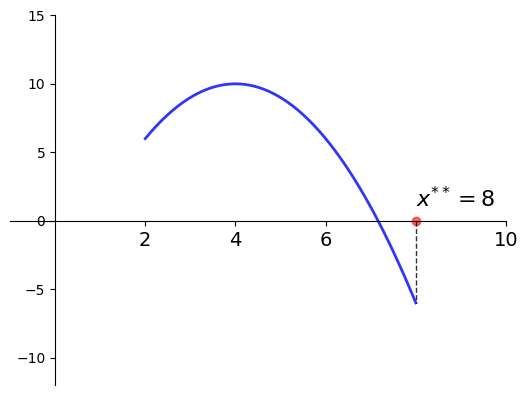
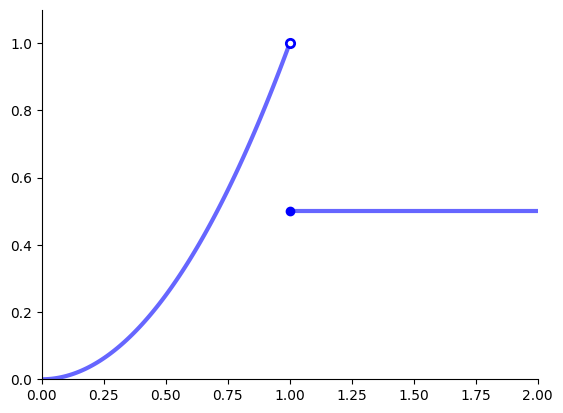
Example
Let
\(f(x) = -(x-4)^2 + 10\)
\(a = 2\) and \(b=8\)
Then
\(x^* = 4\) is a maximizer of \(f\) on \([2, 8]\)
\(x^{**} = 8\) is a minimizer of \(f\) on \([2, 8]\)

Fig. 31 Maximizer on \([a, b] = [2, 8]\) is \(x^* = 4\)#

Fig. 32 Minimizer on \([a, b] = [2, 8]\) is \(x^{**} = 8\)#
The set of maximizers/minimizers can be
empty
a singleton (contains one element)
finite (contains a number of elements)
infinite (contains infinitely many elements)
Example: infinite maximizers
\(f \colon [0, 1] \to \mathbb{R}\) defined by \(f(x) =1\)
has infinitely many maximizers and minimizers on \([0, 1]\)
Example: no maximizers
The following function has no maximizers on \([0, 2]\)

Fig. 33 No maximizer on \([0, 2]\)#
Definition
Point \(x\) is called interior to \([a, b]\) if \(a < x < b\)
The set of all interior points is written \((a, b)\)
We refer to \(x^* \in [a, b]\) as
interior maximizer if both a maximizer and interior
interior minimizer if both a minimizer and interior
Finding optima#
Definition
A stationary point of \(f\) on \([a, b]\) is an interior point \(x\) with \(f'(x) = 0\)
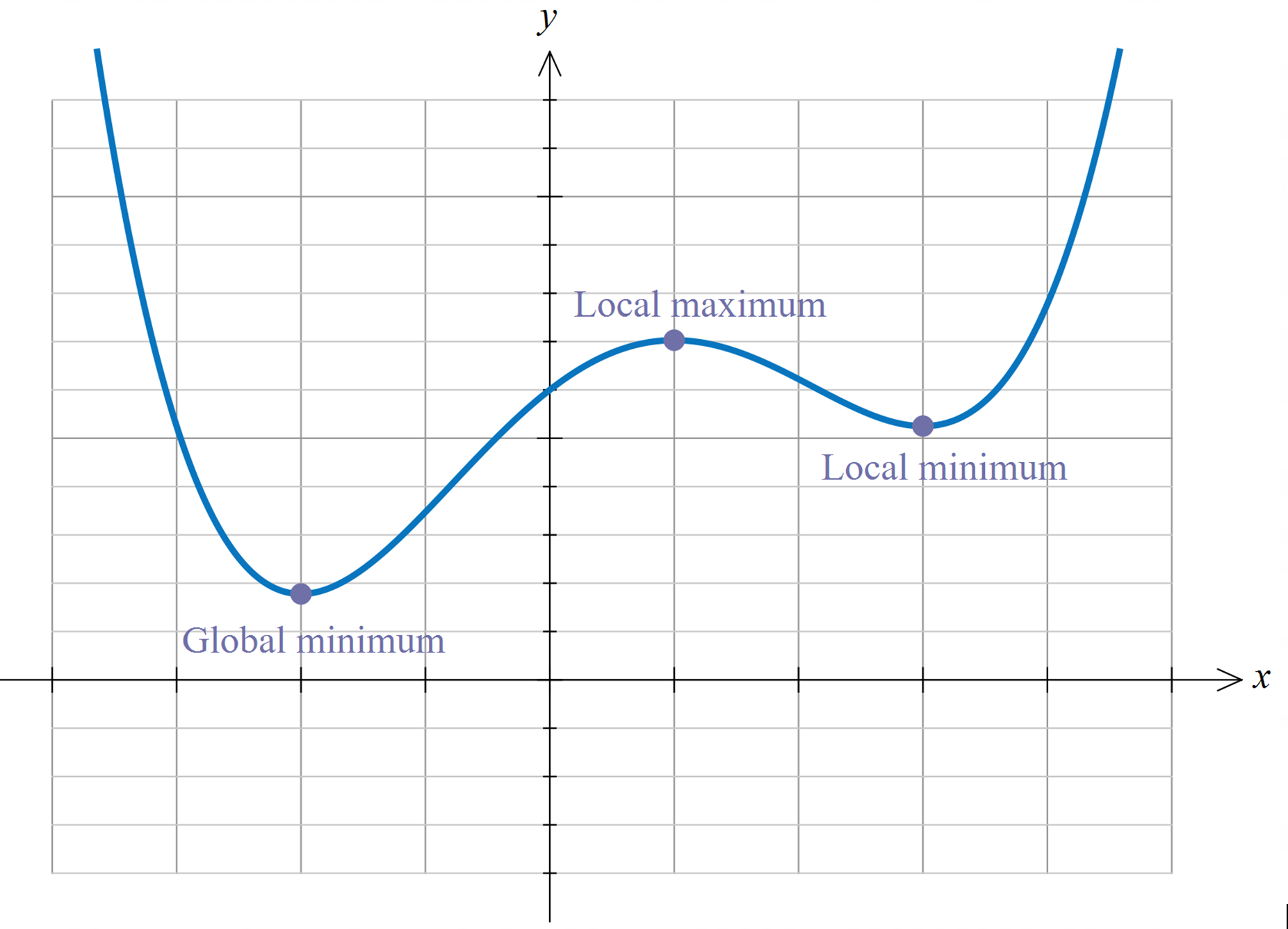
Fig. 34 Interior maximizers/minimizers are stationary points.#
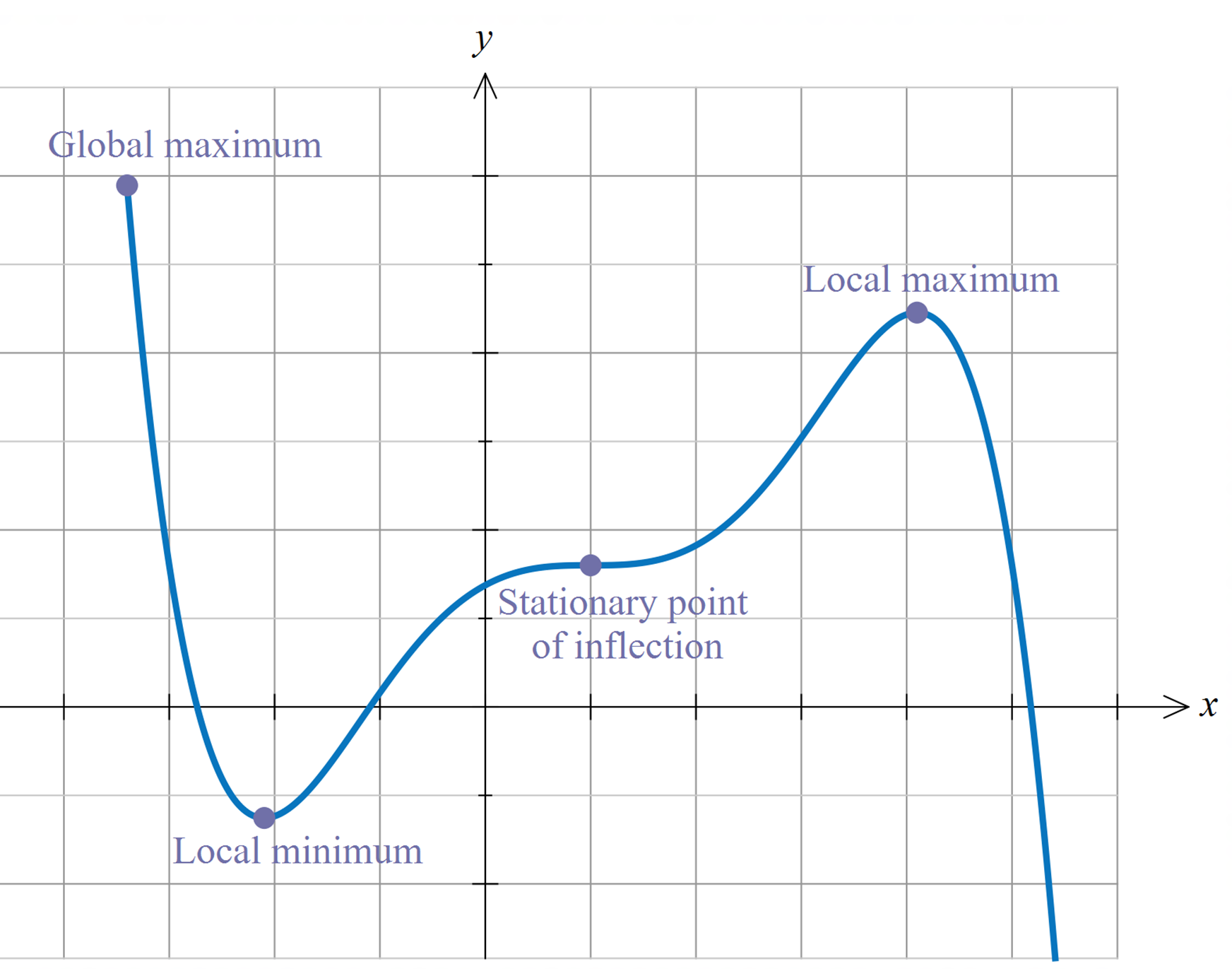
Fig. 35 Not all stationary points are maximizers!#
Fact
If \(f\) is differentiable and \(x^*\) is either an interior minimizer or an interior maximizer of \(f\) on \([a, b]\), then \(x^*\) is stationary
Sketch of proof, for maximizers:
If \(f'(x^*) \ne 0\) then exists small \(h\) such that \(f(x^* + h) > f(x^*)\)
Hence interior maximizers must be stationary — otherwise we can do better
Fact
Previous fact \(\implies\)
\(\implies\) any interior maximizer stationary
\(\implies\) set of interior maximizers \(\subset\) set of stationary points
\(\implies\) maximizers \(\subset\) stationary points \(\cup \{a\} \cup \{b\}\)
Algorithm for univariate problems
Locate stationary points
Evaluate \(y = f(x)\) for each stationary \(x\) and for \(a\), \(b\)
Pick point giving largest \(y\) value
Minimization: same idea
Example
Let’s solve
Steps
Differentiate to get \(f'(x) = 3x^2 - 12x + 4\)
Solve \(3x^2 - 12x + 4 = 0\) to get stationary \(x\)
Discard any stationary points outside \([-2, 5]\)
Eval \(f\) at remaining points plus end points \(-2\) and \(5\)
Pick point giving largest value
from sympy import *
x = Symbol('x')
points = [-2, 5]
f = x**3 - 6*x**2 + 4*x + 8
fp = diff(f, x)
spoints = solve(fp, x)
points.extend(spoints)
v = [f.subs(x, c).evalf() for c in points]
maximizer = points[v.index(max(v))]
xstar = maximizer.evalf()
print("Maximizer =", str(maximizer),'=',xstar)
Maximizer = 2 - 2*sqrt(6)/3 = 0.367006838144548
Show code cell source
import matplotlib.pyplot as plt
import numpy as np
xgrid = np.linspace(-2, 5, 200)
f = lambda x: x**3 - 6*x**2 + 4*x + 8
xstar=0.367006838144548
fig, ax = plt.subplots()
ax.plot(xgrid, f(xgrid), 'b-', lw=2, alpha=0.8)
ax.set_xticks([-2,-1,0,xstar,1,3])
yl=ax.get_ylim()
ax.set_xticklabels(['-2','-1','0',r'$x^*$','1','3'], fontsize=14)
ax.plot((xstar, xstar), (yl[0], f(xstar)), 'g--', lw=1, alpha=0.8)
ax.grid()
Second order conditions and local otpima#
So far we have been talking about global maximizers and minimizers:
definition in the very beginning
algorithm above for univariate function on closed interval
It is important to keep in mind the desctinction between the global and local optima.
Definition
Consider a function \(f: A \to \mathbb{R}\) where \(A \subset \mathbb{R}^n\). A point \(x^* \in A\) is called a
local maximizer of \(f\) if \(\exists \delta>0\) such that \(f(x^*) \geq f(x)\) for all \(x \in B_\delta(x^*) \cap A\)
loca minimizer of \(f\) if \(\exists \delta>0\) such taht \(f(x^*) \leq f(x)\) for all \(x \in B_\delta(x^*) \cap A\)
In other words, a local optimizer is a point that is a maximizer/minimizer in some neighborhood of it and not necesserily in the whole function domain.
Fact (Second order conditions)
If \(f\) is twice differentiable and \(x^*\) is an interior point then
if \(f'(x^*) = 0\) and \(f''(x^*) > 0\) then \(x^*\) is a local minimizer
if \(f'(x^*) = 0\) and \(f''(x^*) < 0\) then \(x^*\) is a local maximizer
In univariate case the second order conditions amount to checking the sign of the second order derivative at the stationary point.
In higher dimensional cases the situation is much different. We will see how it works out in two dimensions in the end of the course.
Sufficiency and uniqueness with shape conditions#
When is \(f'(x^*) = 0\) sufficient for \(x^*\) to be a maximizer?
One answer: When \(f\) is concave
Show code cell source
xgrid = np.linspace(-2, 2, 200)
f = lambda x: - 8*x**2 + 8
fig, ax = subplots()
ax.set_ylim(-15, 10)
ax.set_yticks([-15, -10, -5, 5, 10])
ax.set_xticks([-1, 0, 1])
ax.plot(xgrid, f(xgrid), 'b-', lw=2, alpha=0.8, label='concave $f$')
ax.legend(frameon=False, loc='lower right')
plt.show()
When is \(f'(x^*) = 0\) sufficient for \(x^*\) to be a minimizer?
One answer: When \(f\) is convex
Show code cell source
xgrid = np.linspace(-2, 2, 200)
f = lambda x: - 8*x**2 + 8
fig, ax = subplots()
ax.set_ylim(-10, 15)
ax.set_yticks([-10, -5, 5, 10, 15])
ax.set_xticks([-1, 0, 1])
ax.plot(xgrid, -f(xgrid), 'b-', lw=2, alpha=0.8, label='convex $f$')
ax.legend(frameon=False, loc='lower right')
plt.show()
Fact
For maximizers:
If \(f \colon [a,b] \to \mathbb{R}\) is concave and \(x^* \in (a, b)\) is stationary then \(x^*\) is a maximizer
If, in addition, \(f\) is strictly concave, then \(x^*\) is the unique maximizer
Fact
For minimizers:
If \(f \colon [a,b] \to \mathbb{R}\) is convex and \(x^* \in (a, b)\) is stationary then \(x^*\) is a minimizer
If, in addition, \(f\) is strictly convex, then \(x^*\) is the unique minimizer
Show code cell content
p = 2.0
w = 1.0
alpha = 0.6
xstar = (alpha * p / w)**(1/(1 - alpha))
xgrid = np.linspace(0, 4, 200)
f = lambda x: x**alpha
pi = lambda x: p * f(x) - w * x
fig, ax = subplots()
ax.set_xticks([1,xstar,2,3])
ax.set_xticklabels(['1',r'$\ell^*$','2','3'], fontsize=14)
ax.plot(xgrid, pi(xgrid), 'b-', lw=2, alpha=0.8, label=r'$\pi(\ell) = p\ell^{\alpha} - w\ell$')
ax.plot((xstar, xstar), (0, pi(xstar)), 'g--', lw=1, alpha=0.8)
#ax.legend(frameon=False, loc='upper right', fontsize=16)
glue("fig_price_taker", fig, display=False)
glue("ellstar", round(xstar,4))
Example
A price taking firm faces output price \(p > 0\), input price \(w >0\)
Maximize profits with respect to input \(\ell\)
where the production technology is given by
Evidently
so unique stationary point is
Moreover,
for all \(\ell \ge 0\) so \(\ell^*\) is unique maximizer.
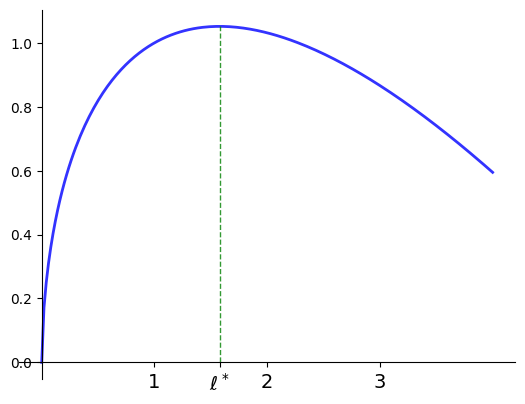
Fig. 36 Profit maximization with \(p=2\), \(w=1\), \(\alpha=0.6\), \(\ell^*=\)1.5774#
Elasticity#
Elasticity and in particular point elasticity is a concept that is widely used in economics for measuring responsiveness of economic quantities (demand, labor supply, etc.) to changes in other economic quantities (prices, wages, etc.)
Definition (in words)
Suppose that \(y=f(x)\). The elasticity of \(y\) with respect to \(x\) is defined to be the percentage change in \(y\) that is induced by a small (infinitesimal) percentage change in \(x\).
So, what is a percentage change in \(x\)?
\(x\) to \(x+h\), making \(h\) the absolute change in \(x\)
\(x\) to \(x + rx\), making \((x+rx)/x = 1+r\) the relative change in \(x\), and \(r\) is the relative change rate
percentage change in \(x\) is the relative change rate expressed in percentage points
We are interested in infinitesimal percentage change, therefore in the limit as \(r \to 0\) (irrespective of the units of \(r\))
What is the percentage change in \(y\)?
Answer: rate of change of \(f(x)\) that can be expressed as
Let’s consider the limit
Define a new function \(g\) such that \(f(x) = g\big(\ln(x)\big)\) and \(f\big(x(1+r)\big) = g\big(\ln(x) + \ln(1+r)\big)\)
Continuing the above, and noting that \(\ln(1+r) \to 0\) as \(r \to 0\) we have
See the example above showing that \(\lim_{r \to 0} \frac{\ln(1+r)}{r} = 1\).
In the last step, to make sense of the expression \(\frac{d f(x)}{d \ln(x)}\), imagine that \(x\) is a function of some other variable we call \(\ln(x)\). Then we can use the chain rule and the inverse function rule to show that
Note, in addition, that by the chain rule the following also holds
Putting everything together, we arrive at the following equivalent expressions for elasticity.
Definition (exact)
The (point) elasticity of \(f(x)\) with respect to \(x\) is defined to be the percentage change in \(y\) that is induced by a small (infinitesimal) percentage change in \(x\), and is given by
Example
Suppose that we have a linear demand curve of the form
where \(a > 0\) and \(b > 0\) The slope of this demand curve is equal to \((−b)\) As such, the point own-price elasticity of demand in this case is given by
Note that
More generally, we can show that, for the linear demand curve above, we have
Since the demand curve above is downward sloping, this means that
Example
Suppose that we have a demand curve of the form
where \(a > 0\). Computing the point elasticity of demand at price \(P\) we have
Constant own-price elasticity!
Alternatively we could compute this elasticity as
Newton-Raphson method#
Classic method for fast numerical solving the equation of the form \(f(x)=0\)
Equation solving
Finding maximum/minimum based on FOC, then \( f(x)=Q'(x)\)
Quadratic convergence rate when initialized in the domain of attraction of the solution
Algorithm:
Start with some good guess \( x_0 \) not too far from the solution
Newton step: \( x_{i+1} = x_i - \frac{f(x_i)}{f'(x_i)} \)
Iterate until convergence in some metric
Derivation based on the Taylor series#
Take first two terms, assume \( f(x) \) is solution, and let \( x_0=x_i \) and \( x=x_{i+1} \)
Example
See the working example in Jupyter Notebook
